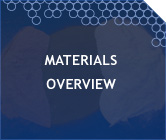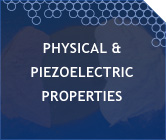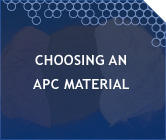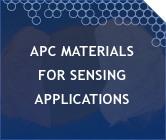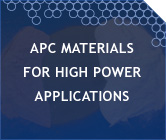APC Materials for High Power Applications
APC 840, APC 880, and APC 841 Materials offer high mechanical quality factors and low dielectric loss.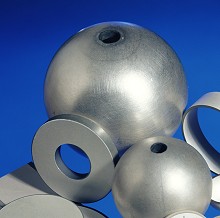
High power applications are one of the main uses of “hard” piezoelectric ceramic materials. Piezoelectric materials are categorized as a “soft” material or a “hard” material based on the physical and piezoelectric properties that they exhibit.
High power ceramics are characterized by having larger mechanical quality factors and lower dissipation factors (dielectric loss). High power ceramics produce smaller displacements, relative to soft ceramics but are less susceptible to depolarization from heating under high duty cycles and/or stress. Generally, lower dissipation factors allow the use of hard ceramics in applications that require higher voltages or larger mechanical loads.
APC offers three piezoelectric materials for use in high power applications: APC 840, APC 880, and APC 841.
APC 840 (Navy I Piezo Material)
APC’s 840 piezoelectric material offers the best combination of high power material characteristics and is ideal for use in a variety applications including:
- Ultrasonic cleaners
- Ultrasonic atomizers
- Ultrasonic micro-bonding apparatus
- Underwater echo sounders
- Sonar devices
- High frequency transducers
- High stress pressure sensors
- Squeeze-type gas ignitors
- High power actuators
- Vibratory motors
- Transformers
APC 841
APC’s 841 material offers a relatively high piezoelectric charge constant (d33) when compared to other hard piezoelectric materials therefore producing more power per volume of material. APC 841 exhibits higher mechanical quality factors and a lower mechanical loss permitting a lower operating temperature and a more economical operation. APC 814 performs very well in many transformer applications.
APC 880 (Navy III Piezo Material)
APC’s 880 piezo material is used when the highest electrical drive/duty cycle is required. High dielectric stability and low mechanical loss under high drive conditions make APC 880 an excellent choice for:
- Ultrasonic welding
- Ultrasonic mixing
- Ultrasonic Dispersion
- Ultrasonic Surgery
- Sonochemistry
- Cryogenic SEMs
For more information on high power applications of piezoelectric materials please visit our Knowledge Center.
For more information about APC International’s piezoelectric materials please consult the following:










